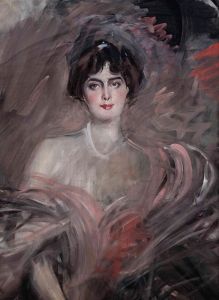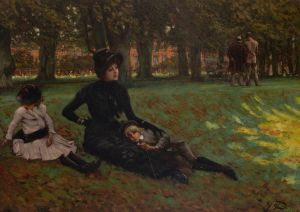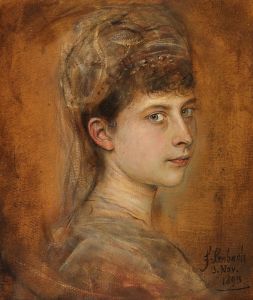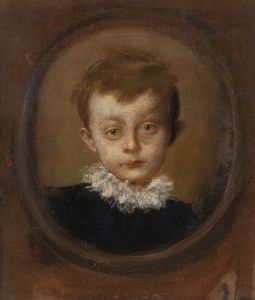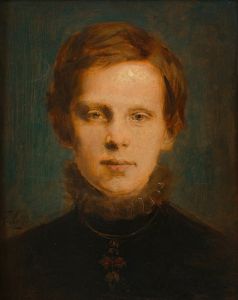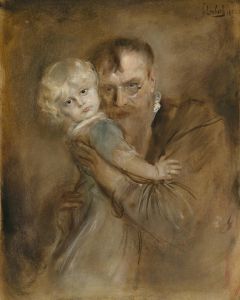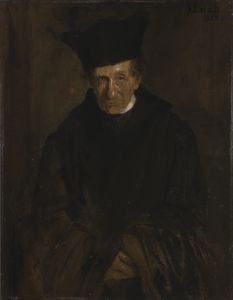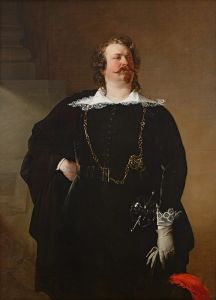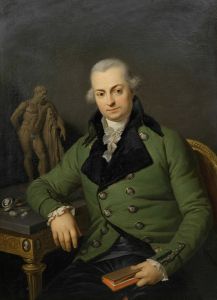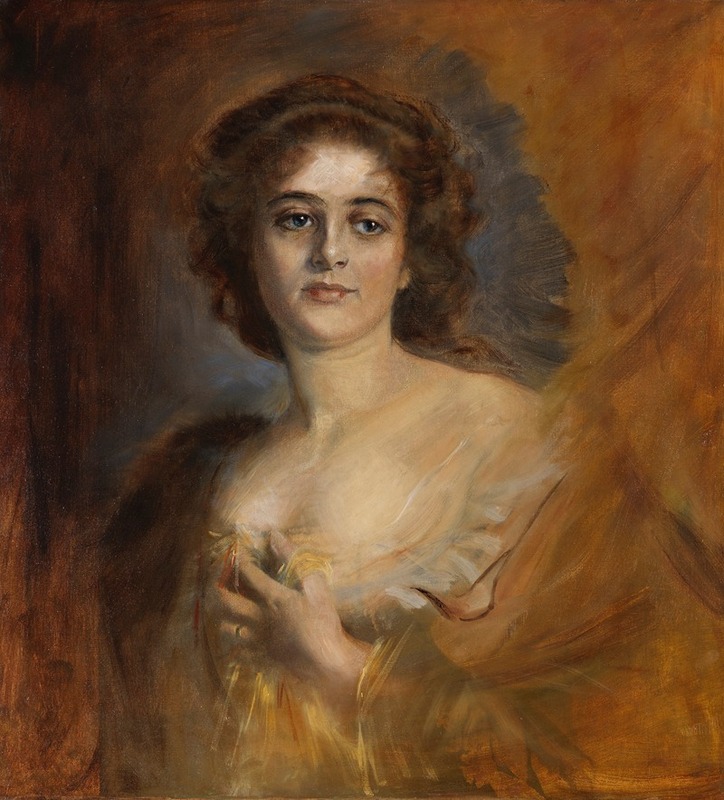
Lolita Gräfin von Zeppelin
A hand-painted replica of Franz von Lenbach’s masterpiece Lolita Gräfin von Zeppelin, meticulously crafted by professional artists to capture the true essence of the original. Each piece is created with museum-quality canvas and rare mineral pigments, carefully painted by experienced artists with delicate brushstrokes and rich, layered colors to perfectly recreate the texture of the original artwork. Unlike machine-printed reproductions, this hand-painted version brings the painting to life, infused with the artist’s emotions and skill in every stroke. Whether for personal collection or home decoration, it instantly elevates the artistic atmosphere of any space.
Franz von Lenbach, a prominent German painter of the 19th century, is known for his portraiture that often captured the essence of his subjects with remarkable detail and realism. One of his notable works is the portrait of Lolita Gräfin von Zeppelin. Lenbach's portraits are celebrated for their ability to convey the personality and status of the individuals he painted, often reflecting the social and cultural milieu of the time.
Lolita Gräfin von Zeppelin was a member of the noble Zeppelin family, which gained significant recognition due to Count Ferdinand von Zeppelin, the aviation pioneer known for developing the Zeppelin airships. The Zeppelin family was part of the German aristocracy, and their prominence in society made them subjects of interest for artists like Lenbach, who frequently painted members of the upper echelons of society.
Franz von Lenbach's approach to portraiture was heavily influenced by the Old Masters, and he often employed techniques reminiscent of artists such as Titian and Rembrandt. His works are characterized by their rich color palettes, meticulous attention to detail, and the ability to capture the psychological depth of his subjects. Lenbach's portraits are not just mere representations; they are insightful studies of character and status.
The portrait of Lolita Gräfin von Zeppelin exemplifies Lenbach's skill in capturing the elegance and poise of his subjects. While specific details about the painting's composition and style are not widely documented, it can be inferred from Lenbach's body of work that the portrait likely features a realistic depiction with a focus on the subject's facial expression and attire, highlighting her noble status.
Lenbach's portraits often served as a means of documenting the social hierarchy and cultural values of his time. By painting members of the aristocracy, he not only provided a visual record of their appearance but also contributed to the perpetuation of their legacy. His works were highly sought after by the elite, who valued his ability to portray them with dignity and grace.
The significance of the portrait of Lolita Gräfin von Zeppelin lies not only in its artistic merit but also in its representation of a historical figure connected to a family that played a crucial role in the development of aviation technology. While the painting itself may not be as widely recognized as some of Lenbach's other works, it remains an important piece within the context of his oeuvre and the history of the Zeppelin family.
In summary, Franz von Lenbach's portrait of Lolita Gräfin von Zeppelin is a testament to his mastery of portraiture and his ability to capture the essence of his subjects. Through his work, Lenbach provided a window into the lives of the aristocracy, preserving their images for future generations and contributing to the rich tapestry of 19th-century art and history.





